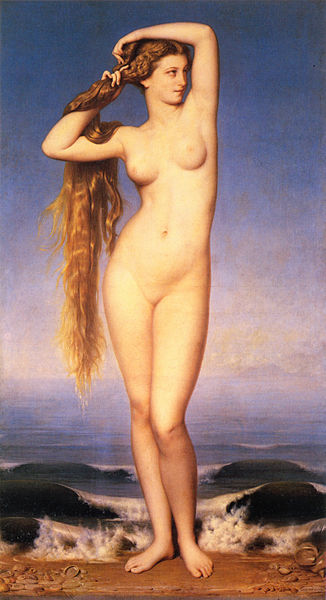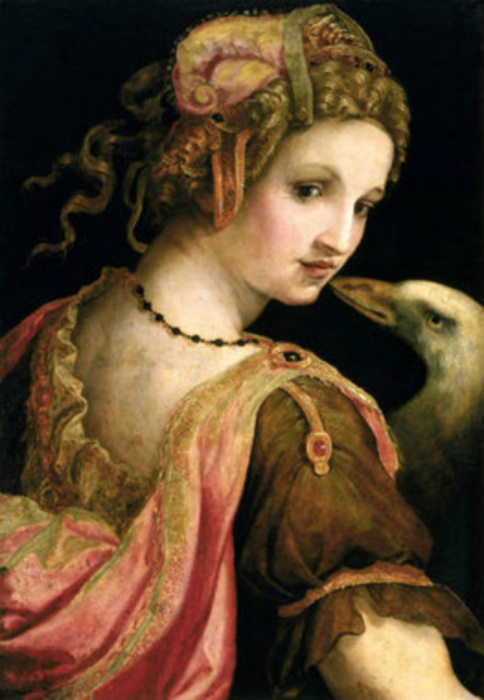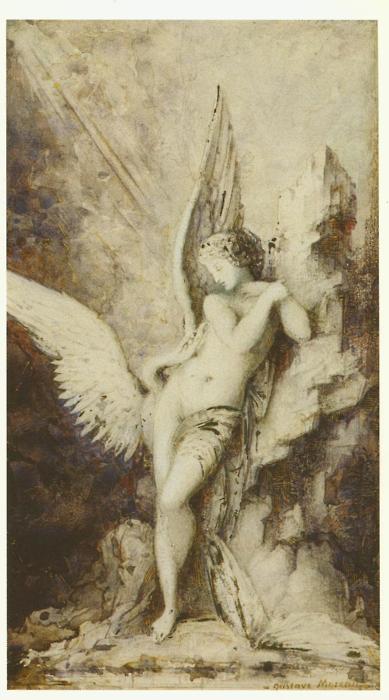 Fresco from Pompei, Casa di Venus, 1st century AD. Dug out in 1960. It is supposed that this fresco could be the Roman copy of famous portrait of Campaspe, mistress of Alexander the Great
Fresco from Pompei, Casa di Venus, 1st century AD. Dug out in 1960. It is supposed that this fresco could be the Roman copy of famous portrait of Campaspe, mistress of Alexander the Great
Venus is the Roman goddess whose functions encompassed love, beauty, sex, fertility and prosperity. In Roman mythology, she was the mother of the Roman people through her son, Aeneas, who survived the fall of Troy and fled to Italy. Julius Caesar claimed her as his ancestor. The Romans adapted the myths and iconography of her Greek counterpart Aphrodite for Roman art and Latin literature. In the later classical tradition of the West, Venus becomes one of the most widely referenced deities of Greco-Roman mythology as the embodiment of love and sexuality. Aphrodite, perhaps altered after aphrós (ἀφρός) “foam”, stems from the more archaic Cretan Aphordíta and Cypriot Aphorodíta, and was probably ultimately borrowed from Cypriot Phoenician.
In myth, Venus-Aphrodite was born of sea-foam. Roman theology presents Venus as the yielding, watery female principle, essential to the generation and balance of life. Her male counterparts in the Roman pantheon, Vulcan and Mars, are active and fiery. Venus absorbs and tempers the male essence, uniting the opposites of male and female in mutual affection. She is essentially assimilative and benign, and embraces several otherwise quite disparate functions. She can give military victory, sexual success, good fortune and prosperity. In one context, she is a goddess of prostitutes; in another, she turns the hearts of men and women from sexual vice to virtue.
In the most famous version of her myth, her birth was the consequence of a castration: Cronus severed Uranus’ genitals and threw them behind him into the sea. The foam from his genitals gave rise to Aphrodite (hence her name, meaning “foam-arisen”), while the Erinyes (furies), and the Meliae emerged from the drops of his blood. Hesiod states that the genitals “were carried over the sea a long time, and white foam arose from the immortal flesh; with it a girl grew.” The girl, Aphrodite, floated ashore on a scallop shell. This iconic representation of Aphrodite as a mature “Venus rising from the sea” (Venus Anadyomene) was made famous in a much-admired painting by Apelles, now lost, but described in the Natural History of Pliny the Elder.
 Nascita di Venere, Sandro Botticelli, c. 1485
Nascita di Venere, Sandro Botticelli, c. 1485
 La Naissance de Vénus, Amaury Duval Jr., 1862
La Naissance de Vénus, Amaury Duval Jr., 1862
 Naissance de Vénus, Alexandre Cabanel, 1963
Naissance de Vénus, Alexandre Cabanel, 1963
 La Naissance de Vénus, William-Adolphe Bouguereau, 1879
La Naissance de Vénus, William-Adolphe Bouguereau, 1879
 Birth of Venus, Joel Peter Witkin, 1982
Birth of Venus, Joel Peter Witkin, 1982
 Birth of Venus (After Botticelli), Andy Warhol, 1984
Birth of Venus (After Botticelli), Andy Warhol, 1984
 2003 novel by Sarah Dunant. The story is set in the late 15th century in Florence, Italy. It features a young Florentine girl, Alessandra Cecchi, who is drawn to a young painter commissioned to paint the family’s chapel walls…
2003 novel by Sarah Dunant. The story is set in the late 15th century in Florence, Italy. It features a young Florentine girl, Alessandra Cecchi, who is drawn to a young painter commissioned to paint the family’s chapel walls…






































